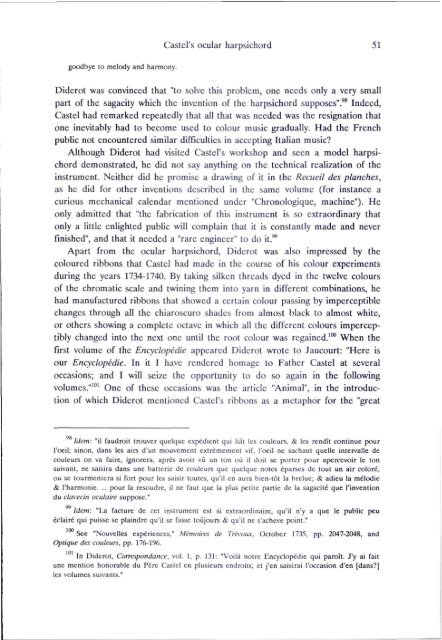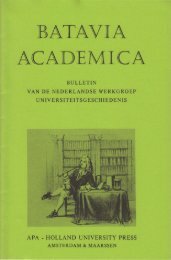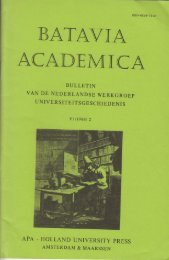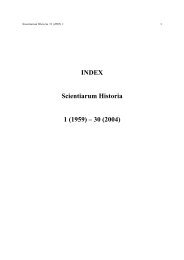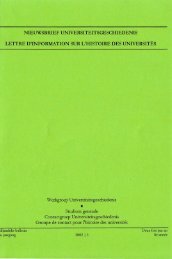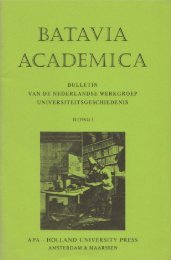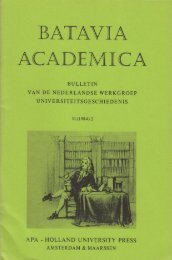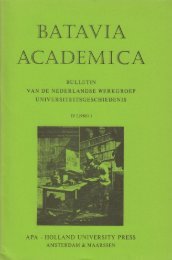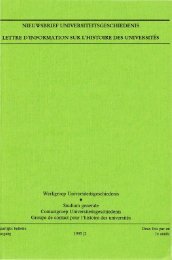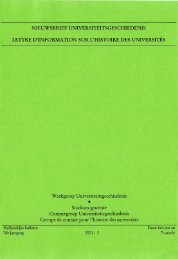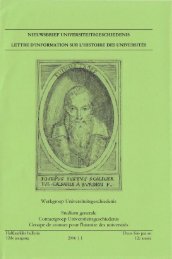the ocular harpsichord of louis-bertrand castel - Gewina
the ocular harpsichord of louis-bertrand castel - Gewina
the ocular harpsichord of louis-bertrand castel - Gewina
Create successful ePaper yourself
Turn your PDF publications into a flip-book with our unique Google optimized e-Paper software.
gcxDdbye to melody and harmony.<br />
Castel's <strong>ocular</strong> <strong>harpsichord</strong> 51<br />
Diderot was convinced that "to solve this problem, one needs only a very small<br />
part <strong>of</strong> <strong>the</strong> sagacity which <strong>the</strong> invention <strong>of</strong> <strong>the</strong> <strong>harpsichord</strong> supposes".'* Indeed,<br />
Castel had remarked repeatedly that all that was needed was <strong>the</strong> resignation that<br />
one inevitably had to become used to colour music gradually. Had <strong>the</strong> French<br />
public not encountered similar difficulties in accepting Italian music?<br />
Although Diderot had visited Castel's workshop and seen a model <strong>harpsichord</strong><br />
demonstrated, he did not say anything on <strong>the</strong> technical realization <strong>of</strong> <strong>the</strong><br />
instrument. Nei<strong>the</strong>r did he promise a drawing <strong>of</strong> it in <strong>the</strong> Recueil des planches,<br />
as he did for o<strong>the</strong>r inventions described in <strong>the</strong> same volume (for instance a<br />
curious mechanical calendar mentioned under "Chronologique, machine"). He<br />
only admitted that "<strong>the</strong> fabrication <strong>of</strong> this instrument is so extraordinary that<br />
only a little enlighted public will complain that it is constantly made and never<br />
finished", and that it needed a "rare engineer" to do it.*^<br />
Apart from <strong>the</strong> <strong>ocular</strong> <strong>harpsichord</strong>, Diderot was also impressed by <strong>the</strong><br />
coloured ribbons that Ca.stel had made in <strong>the</strong> course <strong>of</strong> his colour experiments<br />
during <strong>the</strong> years 1734-1740. By taking silken threads dyed in <strong>the</strong> twelve colours<br />
<strong>of</strong> <strong>the</strong> chromatic scale and twining <strong>the</strong>m into yarn in different combinations, he<br />
had manufactured ribbons that showed a certain colour passing by imperceptible<br />
changes through all <strong>the</strong> chiaroscuro shades from almost black to almost white,<br />
or o<strong>the</strong>rs showing a complete octave in which all <strong>the</strong> different colours imperceptibly<br />
changed into <strong>the</strong> next one until <strong>the</strong> root colour was regained."'*' When <strong>the</strong><br />
first volume <strong>of</strong> <strong>the</strong> Encyclopedic appeared Diderot wrote to Jaucourt: "Here is<br />
our Encyclopedic. In it I have rendered homage to Fa<strong>the</strong>r Castel at several<br />
occasions; and 1 will seize <strong>the</strong> opportunity to do so again in <strong>the</strong> following<br />
volumes.""" One <strong>of</strong> <strong>the</strong>se occasions was <strong>the</strong> article "Animal", in <strong>the</strong> introduction<br />
<strong>of</strong> which Diderot mentioned Castel's ribbons as a metaphor for <strong>the</strong> "great<br />
Idem: "il faudroit trouver quelque expedient qui liat les couleurs.


